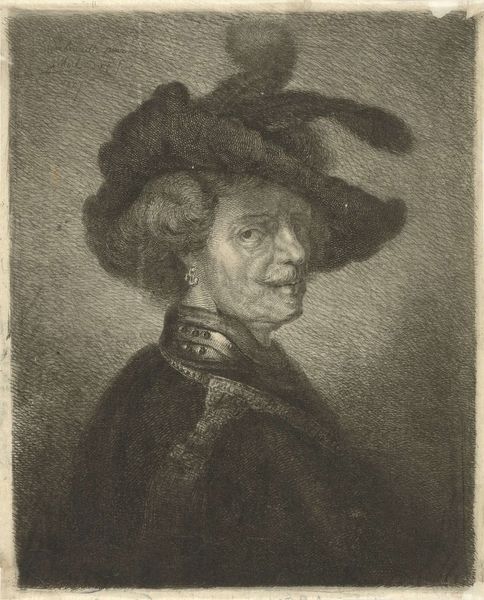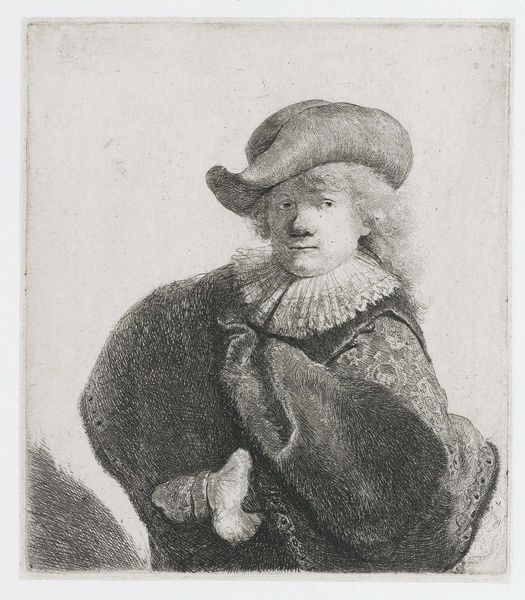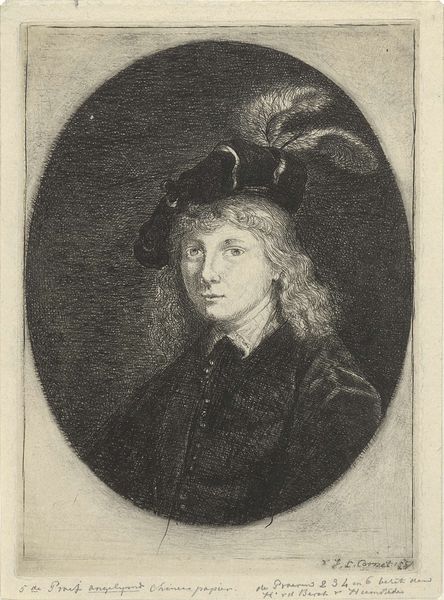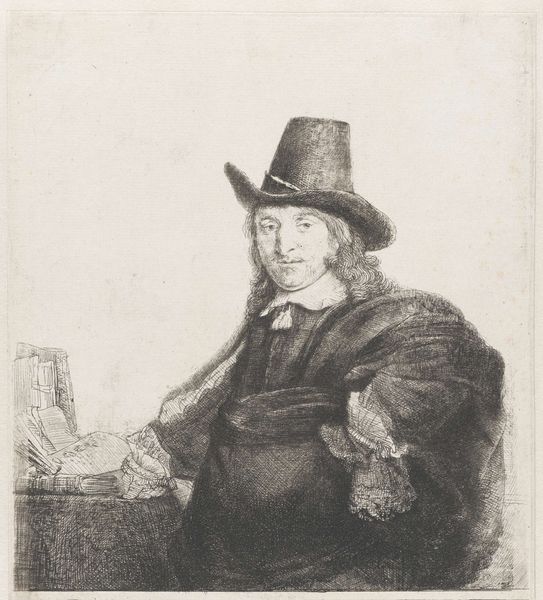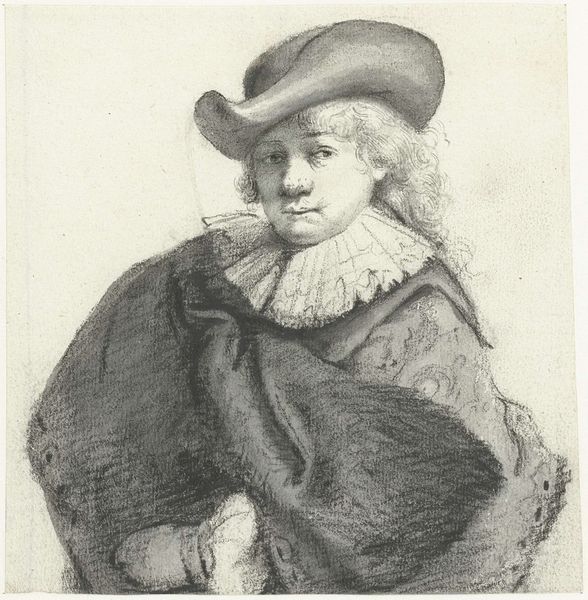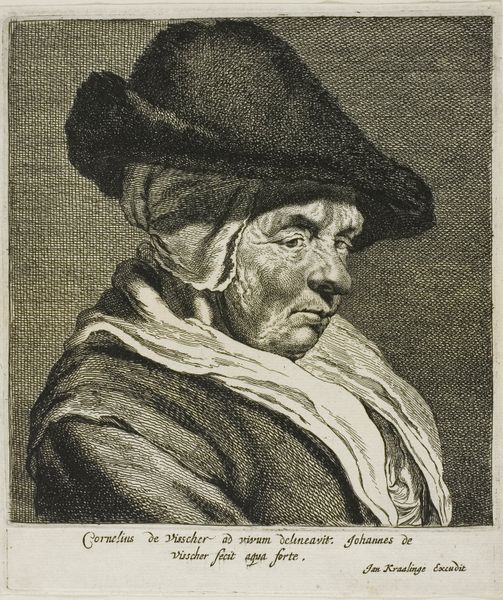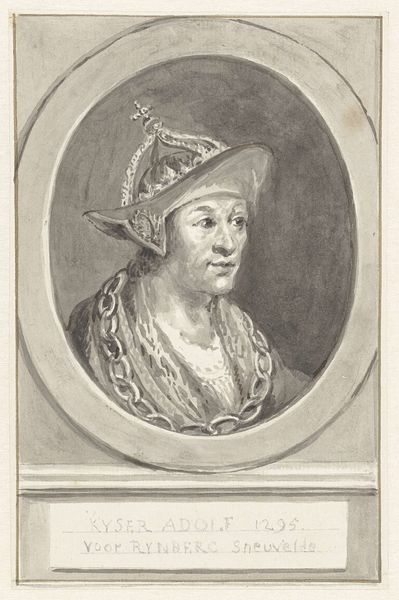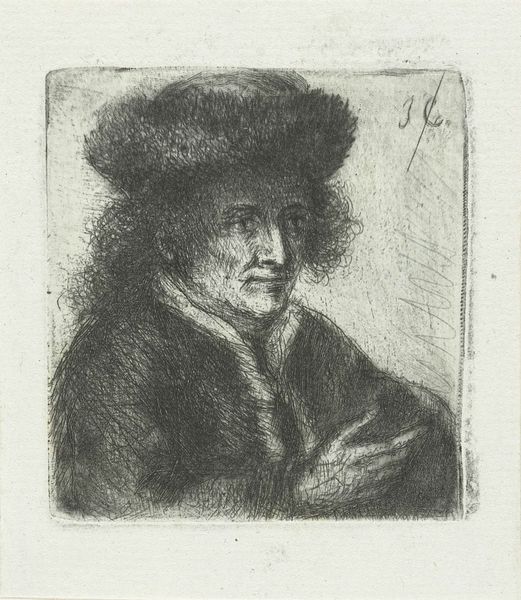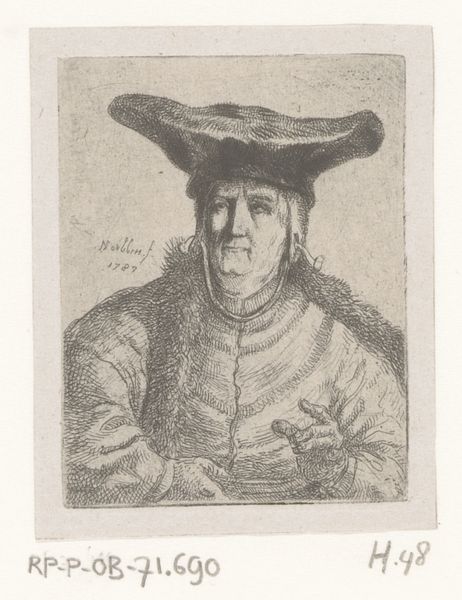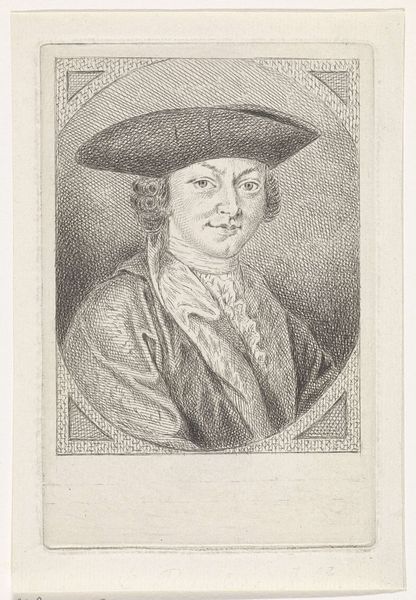
#
pencil drawn
#
light pencil work
#
pencil sketch
#
old engraving style
#
charcoal drawing
#
charcoal art
#
portrait reference
#
pencil drawing
#
portrait drawing
#
pencil work
Dimensions: height 190 mm, width 157 mm
Copyright: Rijks Museum: Open Domain
Curator: Welcome! Here we have "Tronie van een man met gevederde baret," or "Head of a man with a feathered beret." This work was produced around 1827, by Johannes Mock and currently resides here at the Rijksmuseum. Editor: My first impression is of restrained intensity. The close hatching gives it a compelling darkness, making the subject appear incredibly resolute despite the delicate medium. Curator: Absolutely. Mock’s engagement with the historical genre of the "tronie"—studies of expressive faces—demonstrates the enduring appeal of exploring human character within specific social types and sartorial choices. It speaks to the 19th-century fascination with typologies and visual documentation of social roles. Editor: And what a splendid hat! From a purely formal perspective, that feathered beret is wonderfully rendered. The varying line weights create an illusion of texture, light, and shadow that truly makes the feathers come alive against that background of meticulously etched lines. Curator: Yes, but that beret isn’t just about the light play. It's a signifier of status, perhaps leaning into a romanticized vision of the Dutch Golden Age. Think about the political climate of the Netherlands during Mock’s time; national identity was being reshaped. Such attire links back to earlier periods of Dutch power and artistic flourishing. Editor: True, and consider how the face itself, though drawn with precise detail, remains somewhat ambiguous emotionally. That lends the drawing a certain universality—allowing viewers to project their own feelings or interpretations onto the subject. It becomes less about portraiture and more about…pure presence. Curator: That interplay between the general and specific—the way historical context informs but doesn't dictate our reading—is exactly what makes Mock's work so engaging. It acts as a window into both artistic and societal trends. Editor: I see it, yes. Ultimately, it shows how an image transcends its immediate subject matter and becomes a space of negotiation between artist, object, and the viewer's own aesthetic sense. Curator: A worthy exercise to take the time to closely observe how visual cues function within a larger cultural narrative, even in what appears as just a 'head' study. Editor: I agree. I'll never look at a feathered hat quite the same way again!
Comments
No comments
Be the first to comment and join the conversation on the ultimate creative platform.
